Tashkent city


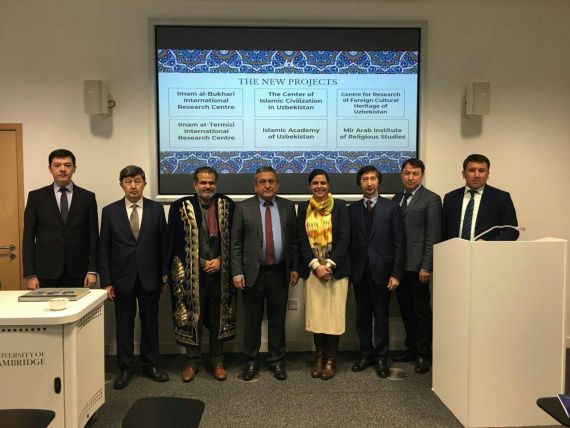
As it was informed earlier, a group of scholars on Islamic and oriental studies have visited Oxford and later Cambridge University. They met with professors and discussed future research perspectives.
Partnership agreements between Central Asian Forum of Cambridge University and Center for Islamic Civilization, Imam Buhari scientific-research center, The Center for research on Uzbek cultural heritage abroad and Tashkent Islamic University were signed.
According to the agreement scholars from Cambridge University are expected to provide lectures at Islamic Academy of Uzbekistan and Tashkent Islamic University and participate in international conferences. Scientific articles of Uzbek researches are going to be published in Cambridge magazines.
The sides agreed on establishing Khorazmi and Ibn Sina scholarships. Cambridge University expressed its willingness to cooperate in scientific and family tourism.
Dr. Siddharth Saxena highly evaluated positive developments in the sphere of ancient cultural heritage research. He also noted that British Oxford and Cambridge University buildings were constructed similar to the architectural styles of madrasahs in Bukhara and Samarkand whic once again proves that friendship relationships were established centuries ago.
We greatly benefit from scientific cooperation with scientists from Uzbekistan as there is great need at our university for specialists who work on cataloging manuscripts in Turkish and Farsi.
It should be noted with great applause that Uzbek lessons started to be offered at Cambridge University since February 12th, 2018. According to the agreements specialists visiting Cambridge from Uzbekistan would be providing Uzbek lessons.
At the end of the meetings the sides expressed their gratitude to the leaders of both countries for the friendly mutual relationships in all spheres of life including science.
Press Service,
Muslim Board of Uzbekistan

The development of road infrastructure and the creation of convenient traffic conditions remain among the key priorities for the capital, whose population and urban area continue to grow rapidly. Consequently, modern roads and bridges are being built across Tashkent, while existing ones are being upgraded to meet contemporary standards.
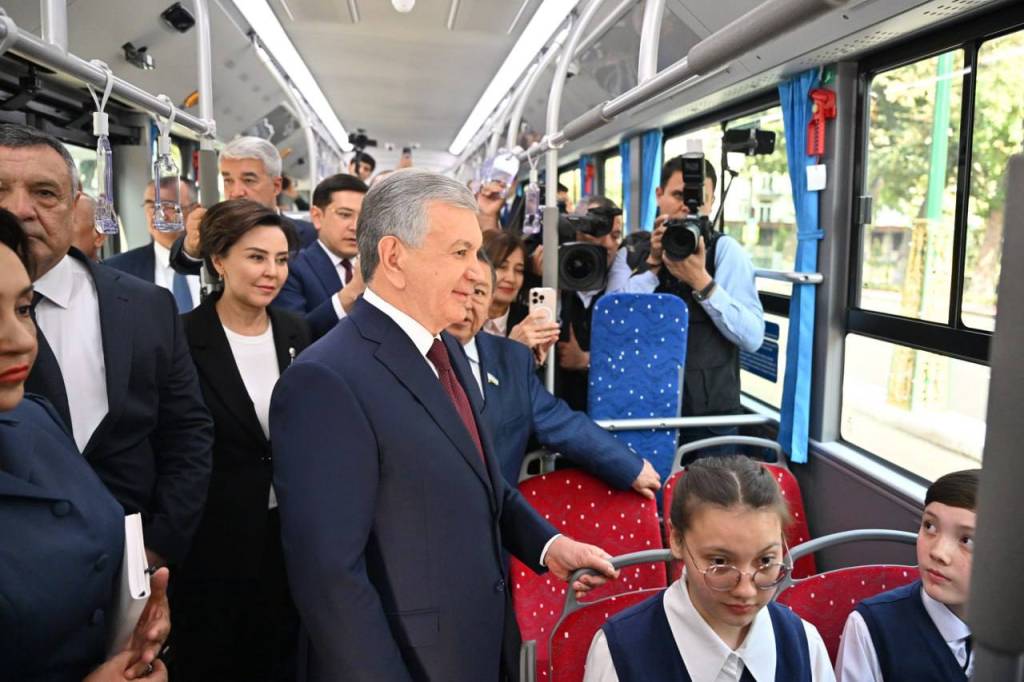
Shota Rustaveli Street, one of the city’s main arteries, connects several districts of Tashkent. To improve traffic flow, the section from Mirabad Street to Choshtepa Street, nearly 7 kilometers long, has been completely reconstructed.
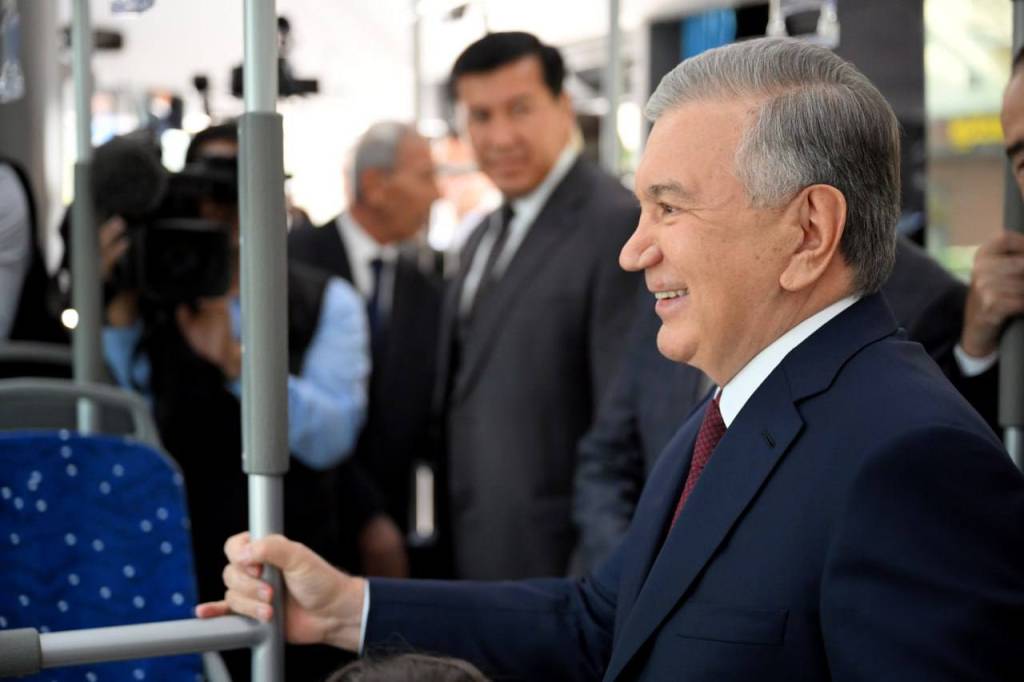
The new layout includes 10 lanes: six for cars, two for public transport, and two designated for parking.
The President, accompanied by representatives of state agencies and public organizations, traveled by bus along the street, inspected the new features, and spoke with passengers about the improvements.
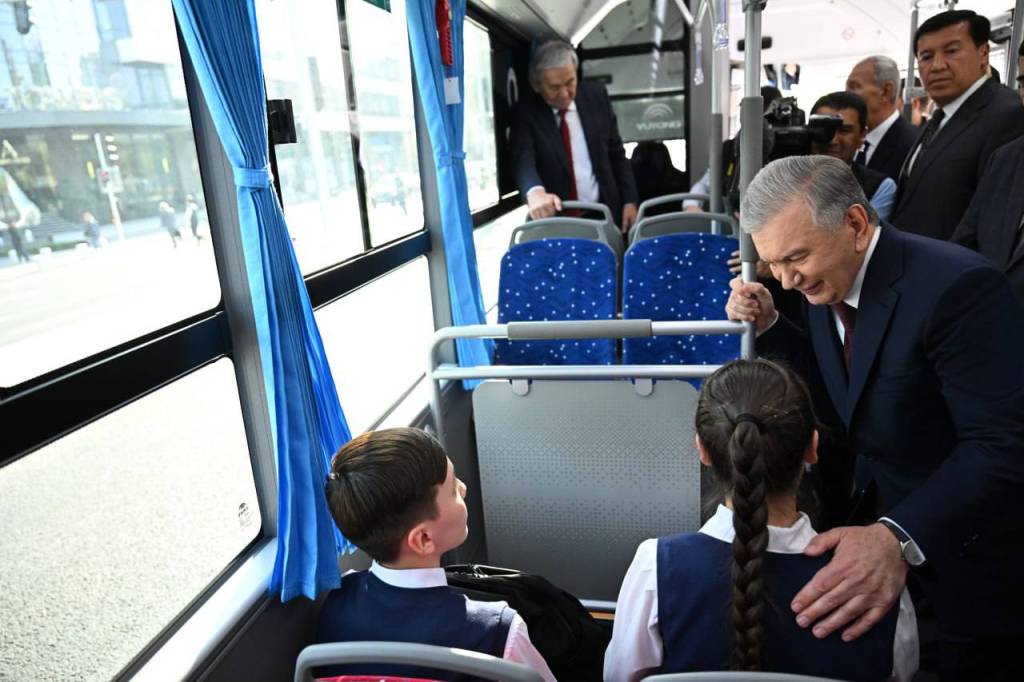
For the first time in Tashkent, a Bus Rapid Transit (BRT) system – dedicated lanes for public transport – has been introduced, drawing on the experience of developed countries. This innovation has significantly increased bus speed and passenger comfort.
As a result of the $19.2 million project, passenger flow rose from 2,500 to 6,000 people per hour. The road’s capacity reached 40,000 vehicles per day, while the average traffic speed increased from 23 to 30 kilometers per hour.

Most importantly, road safety improved markedly, with a significant reduction in traffic accidents.
Under the project, 21 new bus stops and 463 smart traffic lights were installed, and an intelligent transport management system was implemented. In addition, the street now features parking areas, bicycle lanes, green zones, and modern irrigation and drainage systems.
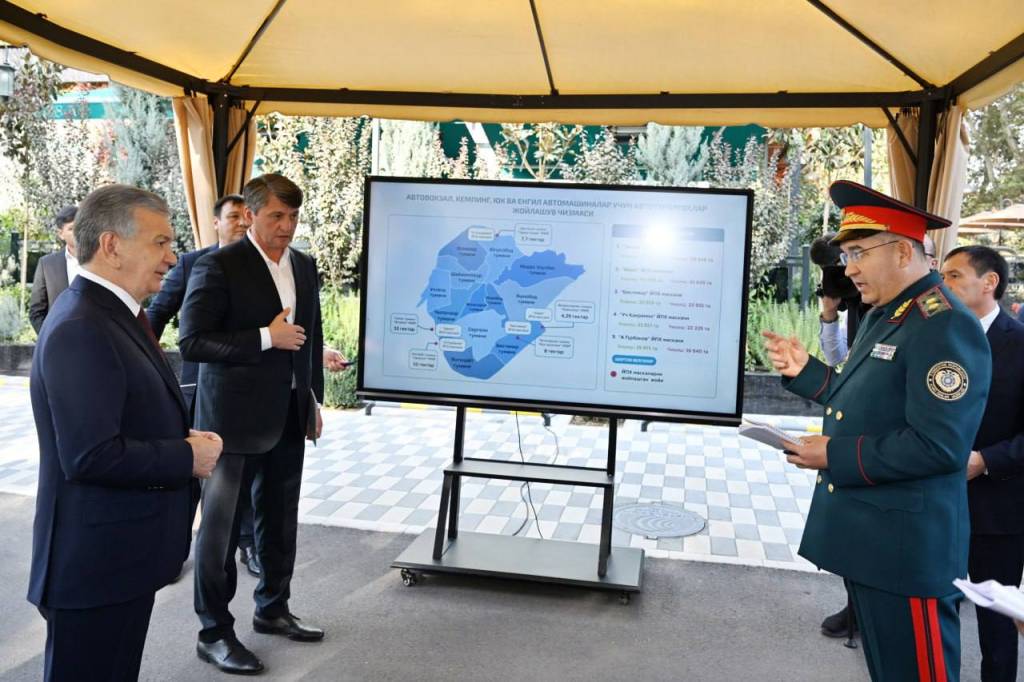
At the site, the President was also presented with projects to expand the network of dedicated bus lanes and to create new transport hubs around the capital.
“If we had not built new metro lines and purchased modern buses, traffic in Tashkent today would have become extremely difficult. That is why we are improving the roads and developing public transport to make life more convenient for people. We will continue this work in all our cities”, President Shavkat Mirziyoyev emphasized.
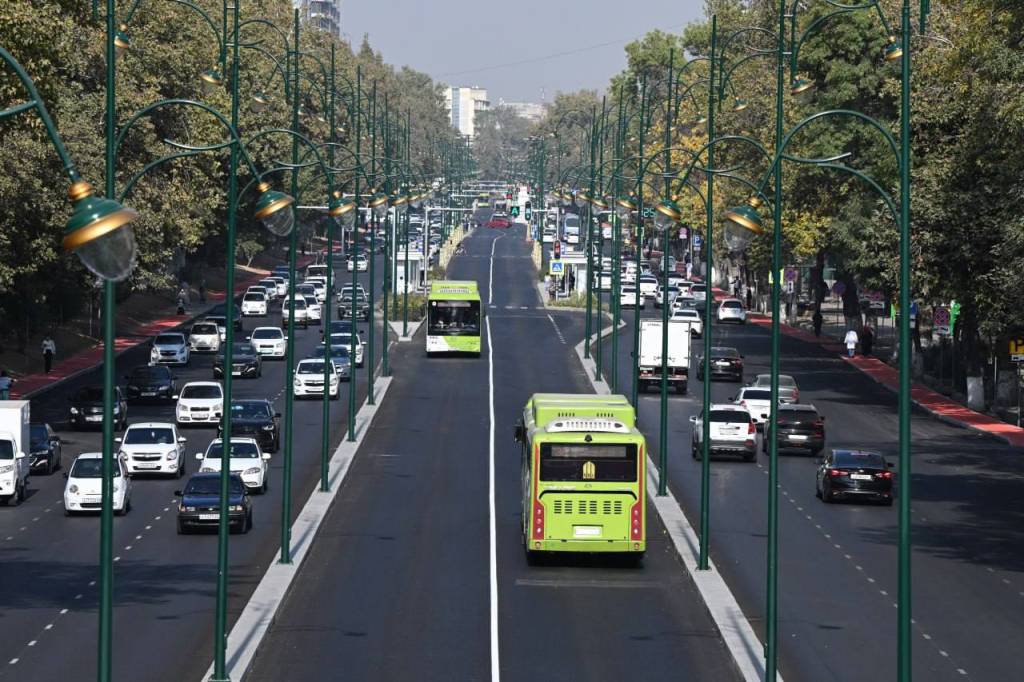
The President instructed responsible officials to improve public transport convenience, reduce traffic congestion, and ensure effective transport connectivity between Tashkent and New Tashkent.
The renovated Shota Rustaveli Street has not only beautified the capital but has also become a symbol of Tashkent’s transition toward a modern and intelligent transport system.